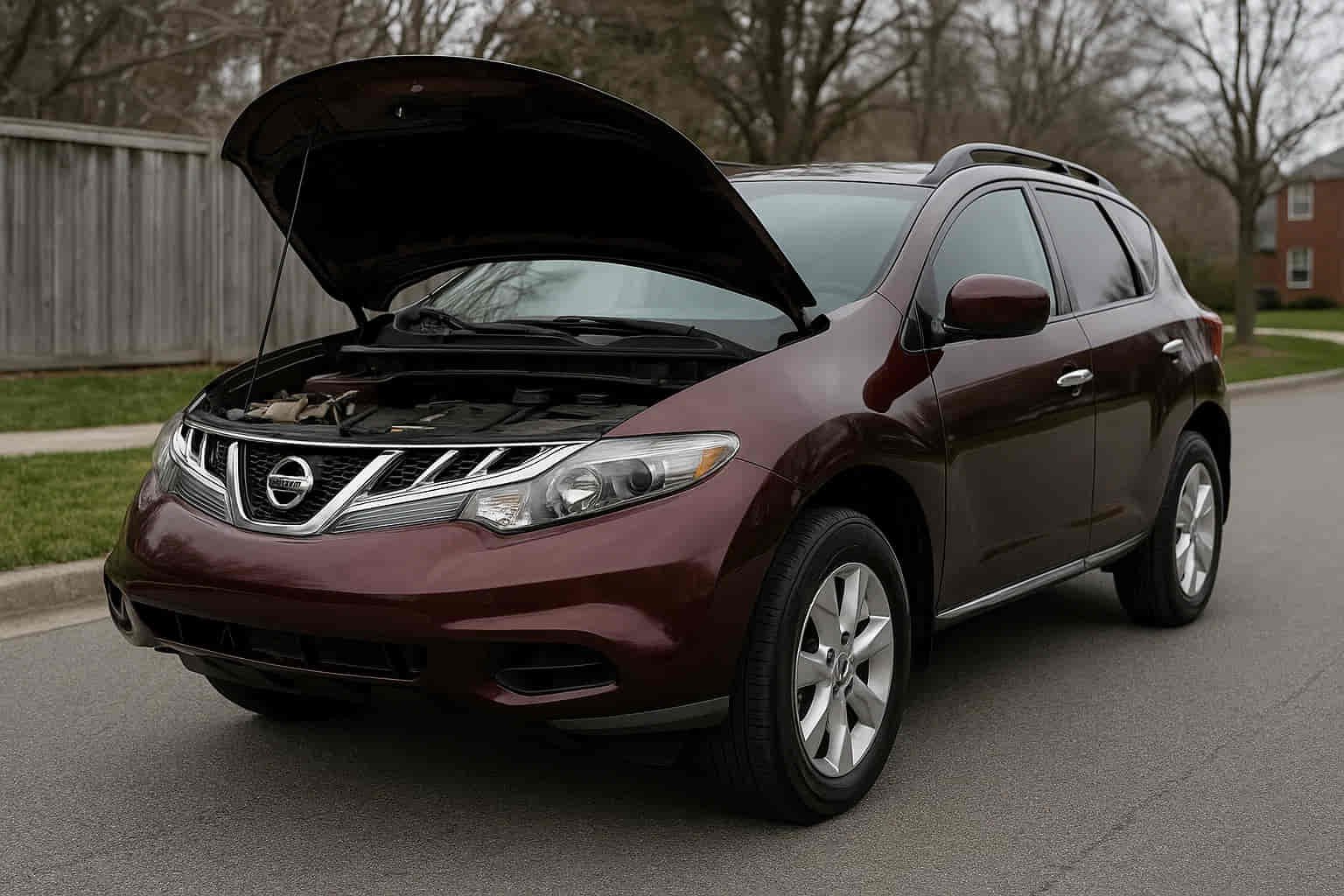If you’ve ever owned a Nissan Murano, chances are you’ve heard about the transmission issues that have haunted this otherwise refined crossover. From sudden jerks on the highway to delayed acceleration when merging into traffic, many drivers have faced what’s now become one of the most discussed topics in the Nissan community — Nissan Murano transmission problems. These issues often stem from the CVT (Continuously Variable Transmission), a system designed for smooth efficiency but infamous for overheating and premature wear when not properly maintained.
The frustration of seeing the RPM needle surge without power or hearing that faint whining noise every time you accelerate can make any Murano owner uneasy. Yet, understanding why these problems occur — and more importantly, how to fix them for good — is what separates an ongoing nightmare from a long-lasting solution. In this guide, we’ll uncover the real causes behind the Murano’s transmission failures, decode the early warning signs most owners overlook, and reveal proven fixes that actually work in the real world.
What Makes Nissan Murano’s CVT Different?
At the heart of every Nissan Murano lies a transmission system that defines how the car moves — a CVT, or Continuously Variable Transmission, engineered to deliver seamless acceleration and better fuel efficiency. Unlike a traditional automatic gearbox that shifts through fixed gears, the Murano’s CVT uses a steel belt and pulleys to provide an infinite range of gear ratios. On paper, it sounds like a perfect balance between comfort and performance, a hallmark of Nissan’s innovation in mid-size crossovers.
However, this same technology that promises smoothness has also become the root of frustration for many Murano owners. The CVT’s constant adjustments under load create more heat than conventional transmissions, and without proper cooling, that heat gradually weakens internal components and transmission fluid integrity. Over time, the smooth ride turns into hesitation, whining, and the dreaded slipping effect that drivers describe as “revving without moving.”
Nissan’s design aimed for long-term efficiency, but in real-world conditions—especially during highway drives or in hot climates—the CVT often struggles to maintain its ideal operating temperature. This delicate balance between innovation and durability is what makes the Murano’s transmission both unique and problematic, setting the stage for the issues explored in the next section.
Common Nissan Murano Transmission Problems
For many Nissan Murano owners, transmission problems don’t appear suddenly — they creep in quietly, often disguised as minor driving discomforts. What begins as a faint whining sound or a slight hesitation during acceleration can gradually evolve into full-blown Nissan Murano transmission problems that compromise safety and drivability. One of the most reported complaints is the CVT’s tendency to slip when accelerating, causing the engine to rev higher without translating that power into forward motion. This not only frustrates drivers but also strains the engine and transmission over time.
Another frequent symptom is jerking or shuddering when driving at steady speeds, particularly on highways or in stop-and-go traffic. These sensations are often linked to fluid degradation or overheating within the CVT unit. In colder climates, some owners report delayed engagement when shifting from park to drive, a sign that internal pressure isn’t building properly. Meanwhile, those living in warmer regions often face overheating issues that trigger the CVT’s fail-safe mode, reducing power output until the transmission cools down.
Beyond the physical discomfort, these issues carry a psychological burden. Owners who invested in the Murano’s reputation for refinement often feel let down by recurring performance inconsistencies. Yet, each of these symptoms is a clue — a signal that something deeper within the CVT’s complex design demands attention, diagnosis, and ultimately, resolution.
Root Causes Behind These Problems

Understanding why Nissan Murano transmission problems occur requires looking beyond the symptoms and into the engineering decisions that shaped the vehicle’s performance. The heart of the issue lies in Nissan’s CVT design, particularly in earlier Murano models where thermal management and fluid dynamics were not as refined as they are today. The CVT relies on precise hydraulic pressure and constant friction between steel belts and pulleys; when the system overheats, the fluid loses its viscosity, and the pulleys begin to slip, setting off a chain reaction of wear and performance degradation.
Maintenance habits also play a crucial role. Many owners assume that transmission fluid lasts a lifetime, but in the Murano’s CVT, neglected fluid changes lead to rapid internal deterioration. When fluid breaks down, microscopic metal particles circulate through the system, accelerating damage to the valve body and bearings. Software calibration adds another layer to this complexity — outdated Transmission Control Module (TCM) programming can cause erratic pressure regulation, leading to shuddering or delayed response.
Environmental conditions compound these vulnerabilities. In hot climates, prolonged idling or uphill driving can raise transmission temperatures beyond design limits, while in colder regions, thickened fluid causes pressure delays. Together, these factors reveal that the Murano’s CVT struggles not because of a single flaw, but due to an intricate web of design limits, maintenance neglect, and environmental stress — a perfect storm that turns innovation into inconvenience.
Real Fixes That Actually Work
The good news is that Nissan Murano transmission problems are not a life sentence. While the CVT has its flaws, many of them can be mitigated—or even fully resolved—when the right actions are taken at the right time. One of the most effective solutions begins with something deceptively simple: replacing the CVT fluid with the correct Nissan NS-3 formulation. This isn’t just routine maintenance; it’s an essential step in restoring proper friction and hydraulic pressure inside the transmission. Drivers who perform a fluid exchange every 30,000 to 40,000 miles often see smoother acceleration and reduced whining noise almost immediately.
In some cases, a transmission software update, also known as a TCM reprogramming, transforms the way the CVT behaves. Nissan periodically releases firmware updates that refine how the transmission modulates pressure, preventing jerks and delayed engagement. Ignoring these updates allows old programming to continue stressing the system unnecessarily. For Murano models prone to overheating, installing an auxiliary CVT cooler can be a game changer. By keeping the transmission temperature within its optimal range, it dramatically extends component life and prevents the dreaded limp mode during summer drives.
When damage is already advanced, the choice becomes either rebuilding or replacing the unit. A rebuild, performed by a certified technician familiar with Nissan CVTs, can restore functionality at a fraction of replacement cost. However, if the steel belt or pulleys are worn beyond tolerance, a remanufactured transmission with warranty coverage is the safer bet. Nissan has, in some cases, offered goodwill assistance for vehicles slightly out of warranty, especially when maintenance records show consistent care. These real-world fixes prove that even a flawed design can regain reliability when approached with precision, patience, and proper knowledge.
Preventing Transmission Failure
Preventing Nissan Murano transmission problems is not about luck—it’s about discipline and understanding how the CVT system behaves under real-world stress. The transmission’s durability depends largely on consistent thermal control and clean fluid circulation. Regular CVT fluid changes, ideally every 30,000 to 40,000 miles, are the single most effective way to preserve internal components. When the fluid remains fresh, it maintains the friction balance that keeps the steel belt and pulleys working in harmony, preventing the microscopic wear that slowly destroys performance.
Driving habits also play a silent but decisive role. Rapid throttle inputs, towing heavy loads, or spending long periods in stop-and-go traffic all generate heat that shortens the CVT’s lifespan. Drivers who adopt smoother acceleration patterns and allow the car to warm up before demanding high performance typically experience far fewer issues. In hotter climates, keeping the transmission cool becomes even more critical; checking the CVT cooler for debris and ensuring proper airflow can mean the difference between reliability and breakdown.
Finally, preventive maintenance is more than mechanical care—it’s awareness. Paying attention to early signs like slipping, whining, or hesitation allows owners to intervene before minor irregularities escalate into major repairs. The Murano’s CVT may have earned a mixed reputation, but when treated proactively, it can deliver years of dependable performance without falling victim to the same fate that frustrates so many others.
Final Thoughts: Should You Still Trust the Murano’s CVT?
After exploring the roots, symptoms, and solutions of Nissan Murano transmission problems, one truth stands out clearly: the CVT itself isn’t inherently bad—it’s just highly sensitive to neglect. Nissan’s pursuit of smoother acceleration and fuel efficiency introduced a transmission that demands precision care rather than casual ownership. For those willing to maintain it properly, the Murano’s CVT can remain reliable well beyond the 100,000-mile mark. But for drivers who skip fluid changes or ignore early warning signs, the same system can become an expensive liability.
Trust, in this case, comes from understanding. Knowing what causes the CVT to fail, how to keep it cool, and when to act gives Murano owners control over their driving experience again. The transmission that once symbolized frustration can, with proper maintenance, return to being the quiet partner it was designed to be—efficient, smooth, and dependable.
If you’ve faced transmission issues or discovered your own methods to keep your Murano running strong, share your experience. Real-world insights from owners often reveal more than any manual ever could—and they might just help the next driver avoid the same costly mistakes.

